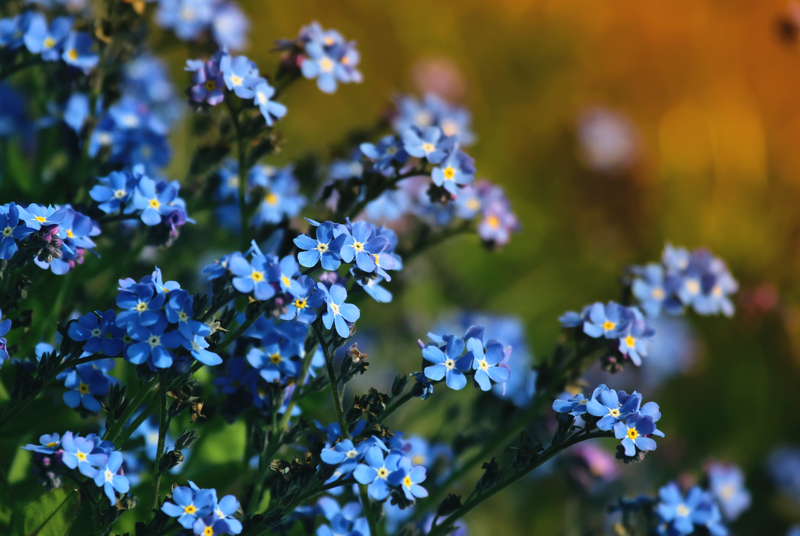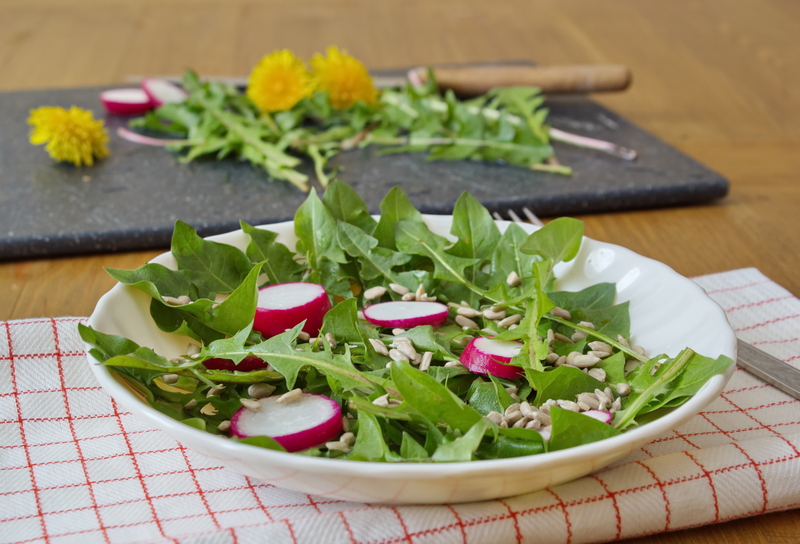Garden Canines: Designing Spaces for Happy Tails
Posted on 17/08/2025
Garden Canines: Designing Spaces for Happy Tails
Man's best friend deserves more than just walks around the block--they deserve a vibrant, stimulating landscape crafted with their needs in mind. Our canine companions thrive outdoors, but traditional gardens can pose hazards or be less than inviting for curious pups. Designing a dog-friendly garden ensures both your pet's safety and their happiness, all while maintaining your home's curb appeal.
In this comprehensive guide, we'll explore practical strategies, creative ideas, and important considerations when designing a garden for dogs. From safe plant choices to entertainment features, let's create a backyard paradise where tails wag and flowers bloom in harmony!
Table of Contents
- Why Dog Gardens Matter
- Planning Your Garden Space with Canines in Mind
- Choosing Safe and Dog-Friendly Plantings
- Hardscape and Pathways for Pet Traffic
- Providing Shade and Shelter
- Play and Exercise Areas for Dogs
- Hydration and Water Features
- Dog Toileting Solutions
- Safety, Fencing, and Escape-Proofing
- UV Protection and Summer Care
- Blending Beauty and Function: Dog Garden Aesthetics
- Maintenance Tips for Pet Gardens
- Conclusion: Happy Tails, Happy Hearts
Why Dog Gardens Matter
Dogs don't just benefit from large runs or grassy patches. A well-designed canine garden offers multi-sensory stimuli, safe exploration, and outlets for energy--all essential for reducing stress and curbing destructive behavior. Enriching your backyard for your pet means giving them purposeful play spaces, safe boundaries, and the chance to express natural behaviors like digging, sniffing, or chasing.
Plus, a thoughtfully planned garden minimizes common problems like trampled blooms, escape attempts, or muddy paw prints inside!
Planning Your Garden Space with Canines in Mind
Begin by assessing your pup's habits, size, agility, and personality. Does your dog dig, sprint, or love chasing squirrels? Are they a sun worshipper or a shade seeker? Identifying these preferences will influence layout, plant selection, and features for your dog-friendly landscape.
Key Questions to Consider
- What is your dog's energy level?
- Does your dog chew or eat plants?
- Do you need barriers to separate garden areas?
- Is your pet prone to escaping or digging?
- Do you share the space with children or other animals?
*Tip: Observe your dog's natural "patrol routes"--these can inform path placement and designed corridors.
Choosing Safe and Dog-Friendly Plantings
Not all plants are created equal when it comes to canine safety. Many common garden flowers and shrubs (like lilies, foxglove, azaleas, or sago palm) are toxic to dogs. Instead, opt for dog-safe greenery that can stand up to rough play and a little nibbling.
Best Plants for Dog Gardens
- Herbs: Rosemary, basil, thyme, and parsley are non-toxic and add fragrance.
- Ornamental Grasses: Durable for play, such as blue fescue or miscanthus.
- Marigolds: Hardy, bright, and non-toxic variety.
- Snapdragons and Sunflowers: Both tall and cheerful, safe for pets.
- Creeping Thyme or Clover: Great groundcovers (clover is also easy on sensitive paws).
- Ferns: Like Boston fern or maidenhair are lush and pet-safe.
Avoid planting: Oleander, daffodils, foxglove, sago palm, azalea, wisteria, yew, and lilies. *Check the ASPCA's toxic plants list before planting!
Hardscape and Pathways for Pet Traffic
Dogs love having purpose-built paths that circle or connect their favorite spots. Defined pathways are spaces your dog can patrol without damaging delicate areas.
Materials for Paths
- Decomposed granite: Cool, soft, and easy to maintain.
- Flagstone or pavers: Smooth, non-slip paving stones are gentle on paws.
- Pine straw or mulch: Use in moderation, but avoid cocoa mulch (it's toxic).
- Artificial turf: A clean option for high-traffic areas and easy clean-up.
Design tip: Widen paths to at least 2-3 feet for larger breeds and avoid sharp-edged stone that could cut paws.
Providing Shade and Shelter
Every garden for dogs should include ample shade spots to prevent overheating during play. Natural shade from trees and shrubs is ideal, but you can supplement with manmade shelters.
Ideas for Dog-Friendly Shade
- Mature trees: Serve double-duty as muscle-scratchers and climbing obstacles.
- Retractable awnings: Provide on-demand shade for patio and play areas.
- Dog houses or cool cabanas: Give dogs a refuge on hot days or during rain.
- Pergolas and trellises: Vine-covered structures are pretty and functional.
Play and Exercise Areas for Dogs
A tired dog is a happy dog! Create a dedicated play zone for fetch, tug-of-war, or agility practice.
Features for Active Canines
- Agility equipment: Tunnels, weave poles, balance beams
- Digging pit or "sand box": Fill with play sand, bury toys for fun excavation
- Sturdy fetch space: A flat, open area of durable grass or artificial lawn
- Interactive toys: Tug ropes, hanging balls, treat puzzles for solo play
Rotate toys and activities to keep your dog's mind sharp and body strong!
Hydration and Water Features
No dog garden is complete without easy access to fresh water. For hot climates, a splash zone or water feature can double as cooling enrichment.
Water Station Ideas
- Automatic pet fountain: Provides filtered, cold water all day long
- Plumbed water bowl: Hands-free and always full
- Mini splash pool: Especially popular with labs, retrievers, and water-loving breeds
- Dog-friendly pond with gentle slope: For supervised swimming and exploration
Always supervise your pet near deep water and clean water features regularly to prevent mosquitos or algae.
Dog Toileting Solutions
Dogs need a designated "bathroom zone" just like their humans. Directing your pup to a specific area keeps your garden neat and protects more delicate plantings.
Toilet Area Options
- Gravel patches for easy waste clean-up (pea gravel is paw-friendly)
- Artificial turf designed specifically for dog runs
- "Potty post" with a target scent for male dogs
- Low-maintenance, out-of-sight corner screened with shrubs or fencing
Tip: Encourage use with treats and positive reinforcement during training.
Safety, Fencing, and Escape-Proofing
Fencing is the foundation of any secure dog garden. The right enclosure keeps pets safe from traffic, wildlife, and neighborhood strays, and prevents your escape artist from going AWOL!
Best Fencing Types for Dogs
- Vinyl or composite fencing: Durable, low maintenance, and hard to climb or chew
- Wooden privacy fencing: Attractive, with customizable heights and styles
- Metal picket or mesh fencing: For good sightlines--ensure tight spacing to prevent squeezing through
- Double-gated "airlocks": Provide extra security at entrances and exits
Fence height should be at least 4 to 6 feet for most breeds; dig-proof the base with buried wire or stone if your pup burrows.
UV Protection and Summer Care
Sunburn isn't just a human concern! Many dogs, especially those with light coats and noses, are vulnerable to UV rays. Create shaded retreats and use pet-safe sunscreen on exposed areas (like noses and ears) during peak sun hours.
- Plant thick shrubs or tall grasses for midday coverage
- Install shade sails or large parasols in open play zones
- Check paw pads for heat--if it's too hot for your hand, it's too hot for your dog!
- Always offer water and encourage rest in the shade
Blending Beauty and Function: Dog Garden Aesthetics
Garden design for dogs doesn't mean sacrificing style. Layer your garden with robust, easy-care perennials, pops of color, and attractive seating for human guests. Raised beds, container gardens, and vertical planters can all add flair while staying out of paw-range.
Stylish Features for Canine-inhabited Spaces
- Decorative boulders for climbing or lounging
- Custom dog sculptures or paw-print stepping stones
- Low-voltage path lighting for safety and ambiance
- Weatherproof garden art that stands up to zoomies and tail wags
- Seating nooks or picnic zones for owners to relax alongside their pets
Maintenance Tips for Pet Gardens
Every dog-friendly garden design requires ongoing care--but the rewards are endless cuddles and happy play sessions. Prioritize non-toxic fertilizers, organic pest control, and regular debris removal for a pristine, pet-safe retreat.
Top Tips for Longevity
- Hose or sweep hardscapes regularly to avoid muddy paw tracking
- Promptly pick up waste to prevent yellowing, odors, and pests
- Trim overhanging branches and weeds to protect both pets and flowers
- Replenish mulch, sand, and ground cover as needed
- Check fencing routinely for damage or dig-outs
- Consult a vet before introducing new plants or amendments
Conclusion: Happy Tails, Happy Hearts
Designing a garden for canines is about more than boundaries and lawns. By embracing dog-centric landscaping, you foster a world where nature and animals, owners and their pets, all share in the pleasures of outdoor living.
Start with safety and comfort, invest in play and enrichment, and watch your dog's spirit bloom alongside your garden's colors. A garden designed for your canine brings happiness, health, and harmony--for every wagging tail in the family.
Create your own "Garden Canines Paradise" today, and let every moment outdoors be a celebration of life, love, and happy tails!



